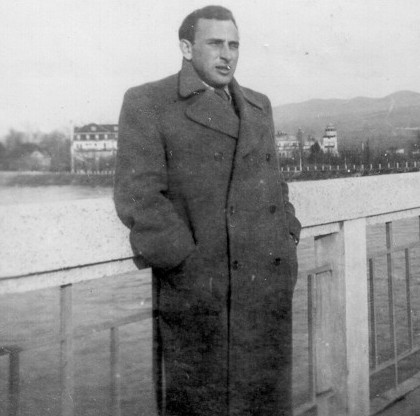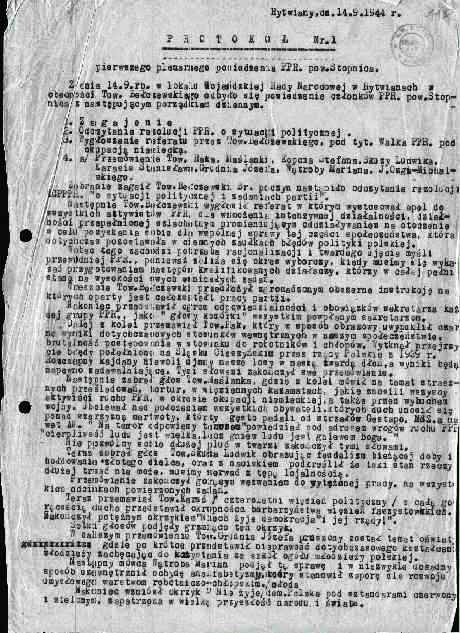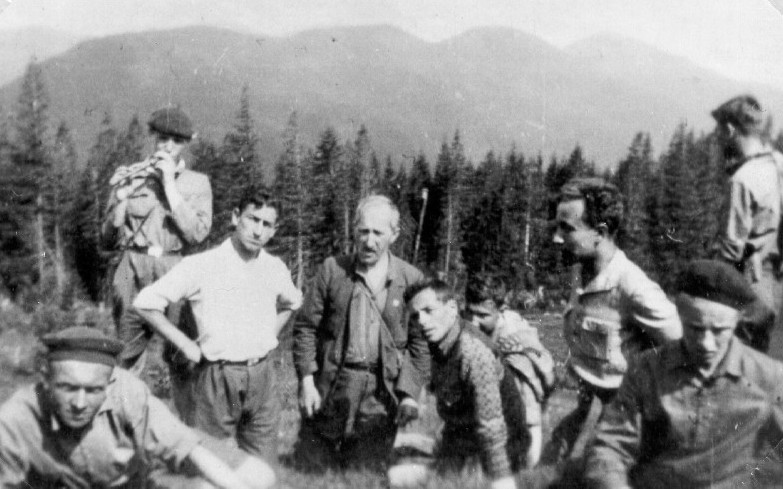Holocaust Education & Archive Research Team |
Revolt & Resistance
Acts of Resistance
Jewish Resistance
Groups Jewish Resistors Allied Reports Anti-Nazi Resistance Nazi collaborators
| |||
Pinkus Kartin
Pinkus Kartin was born in the city of Lusk in the western Ukraine, which was part of the Polish state between the two world wars.
While still in his youth he joined the Communist movement and in the Spanish Civil War he was an officer in the Polish Dombrovski Brigade. When the Second World War commenced Kartin was in France working for the Comintern.
He was recognised as a citizen of the Soviet Union and repatriated to Russia under the terms of the German –Soviet exchange of citizens agreement – which was honoured until the outbreak of hostilities between the two countries.
In the Soviet Union he joined the circle of Polish Communists émigrés, underwent special military training, and was counted among the elite “Enterprises Group” that was chosen to penetrate into Poland, lead the underground Communist Party, and organise an armed force backed by the Communists.
After a number of abortive attempts to reach Poland, the first squad, including Kartin (also known by his underground name of Andrzej Szmidt) parachuted into the Warsaw area at the end of 1941.
Kartin could not take part in the enlistment campaign in the Polish sector since his appearance would betray his Jewish origins. For a while he hid out in the home of a Polish shoemaker, suffering severely from a lack of sufficient nourishment and warm clothing.
Finally Pinkus Kartin comrades decided, without taking account of the original plans and responsibilities to charge Kartin with the mission of organising the Party and the combat units in the ghetto. Kartin, with veteran Communist leader Josef Lewartowski, (also known as Finkelstein), secretly met with Mordechai Anilewicz and other leaders of ZOB in Frebruary, 1942.
A resulting Anti-Fascist coalition materialized. It's name reflected the Communist's reluctance to distinguish between the immediate objective of rescuing the Jews and the more distant aim of aiding the Red Army. The coalition would organize underground cells, train fighting groups, and stir the Ghetto to resistance. At Anilewicz's insistence however, at least some groups would remain in the ghetto to defend it. In the spring of 1942 the Communists began to organise the first group slated to go out to the forests and mobilisation extended throughout the ghetto. For weeks meetings of the bloc’s “fivesomes” were devoted to instruction on the nature of partisan warfare and combat tactics in city and forest.
At the last moment, however, the campaign, which was supposed to be the bloc’s first actual combat operation, was cancelled and the reason for its postponement led to the total disintegration of the bloc.
During May 1942 three of the Polish Workers Party (PPR), including Andrzej Szmidt himself were arrested just as they were about to meet with liaisons of the Communist Party from the “Aryan” side in a ghetto café.
It emerged later that a Gestapo agent who had infiltrated the ranks of the Polish Communists was responsible for the arrest, This arrest basically led to the collapse of the Communist resistance bloc, after an initial cessation of all routine activities it was eventually disbanded in June 1942.
As for Szmidt himself he was murdered by the Germans in Pawiak prison on the 20 May 1942.
Sources:
Copyright: Joel Stein H.E.A.R.T 2008
|



,%20Communist,%20member%20of%20the%20underground%20in%20Warsaw..jpg)